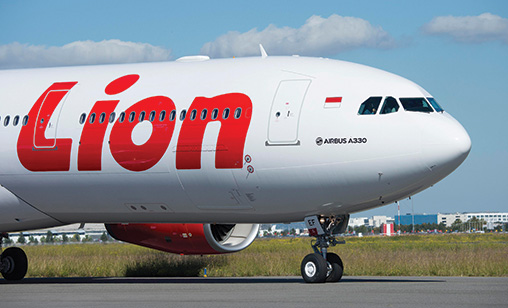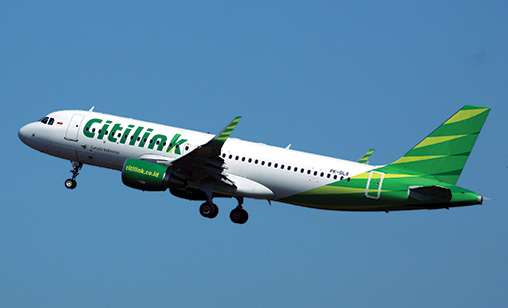Air Safety
Indonesia cleared to fly to U.S after nine year ban lifted
The poor performance of air safety regulators in some Asia-Pacific jurisdictions has taken a turn for the better in recent months as news broke that Indonesia had its U.S. category one safety rating restored.
September 1st 2016
After nine years of excommunication from the U.S. market, Indonesia’s airlines learned last month that they can re-start flying to the U.S. Read More »
In mid-August, the U.S. Federal Aviation Administration (FAA), announced it had restored Indonesia its top tier category 1 rating after a March safety review. Indonesia now complies with International Civil Aviation Organisation (ICAO) standards, an FAA statement said.
 |
| Lion Air could follow Garuda Indonesia in serving Europe |
“With the International Aviation Safety Assessment (IASA) Category 1 rating, Indonesian air carriers can establish services to the United States and carry the code of U.S. carriers,” the FAA said. It said that Indonesia “was not deficient in technical expertise, trained staff, record keeping or inspection processes”.
In June, Garuda Indonesia’s president and chief executive, Arif Wibowo, strongly hinted that Indonesia, which lost its top tier FAA rating in 2007, would soon have it restored. He told media at the International Air Transport Association annual general meeting in Dublin that he expected his airline to be flying to the U.S. in 2017.
Indonesian airlines have not operated services between their home country and the U.S. for 20 years reported the Wall Street Journal last month. Analysts believe it would be hard for the Garuda, which is considering the destinations of New York or Los Angeles, with another stop at another Asian gateway, to make money on the route(s).
The American announcement followed a European Commission (EC) decision to permit three Indonesian carriers, Lion Air, Citilink and Batik Air, to fly to European destinations. Until the summer announcement was made, only flag carrier, Garuda Indonesia, was permitted to serve Europe.
Lion Air is the only Indonesian airline other than Garuda likely to be interested in broadening its network to Europe, but removal from the EC black list is significant for all three of the airlines. If an airline is included on the black list, European travelers are advised against flying on it when travelling in Asia.
In Thailand, a June inspection of all Thai-registered airlines avoided the nation’s carriers from being listed as having sub-standard safety practices in the latest audit by the European Aviation Safety Agency (EASA).
Transport Minister, Arkhom Termpittayapaisith, said the EASA announced 214 airlines from 19 countries failed to meet safety standards but “no Thai airlines were listed”.
Arkhom said the government is speeding up its action plan to meet ICAO’s safety requirements after the organization had sent eight experts on aviation safety to help Thailand overhaul its regulatory system, he said.
Thailand’s cabinet recently approved the funds to hire several experts from Britain and also the Royal Thai Air Force staff to train Thai inspectors in airline audits. A shortage of auditors has been blamed for lax supervision of Thai-registered airlines. Arkhom said Thailand needs at least 30 specialists in the next five years to audit carriers operating in the country. Trainers of auditors from the air force will be qualified military pilots.
The Civil Aviation Authority of Thailand (CAAT) has 23 inspectors available for auditing with another 10 inspectors from Britain’s CAA International Limited providing support. Arkhom said the government expected to complete its action plan in the next six months. After that, there will be an internal evaluation of the country’s overall aviation safety measures.
 |
India also avoided sanctions although it continues to suffer serious shortages of regulatory staff. A recent report prepared by Indian industry body, Assocham, and consultancy KPMG said air traffic control officers (ATCOs) increased to 2,600 last year, but there was still a shortfall of approximately 1,500 ATCOs to serve India’s rapid aviation expansion.
India’s Civil Aviation Ministry is considering authorizing private companies to train ATCOs to address the staff shortages at India’s Air Navigation Services (ANS). The ANS comes under the authority of state-owned Airports Authority of India (AAI) and the public/private training proposal would include upgrading capacity at existing ATCO training facilities.
“This may be started in Public Private Partnership (PPP) mode and then made fully open to the private sector, said the joint report, which also recommended that partnerships with international ATC training institutes should be explored.
India has ATC training facilities at the Civil Aviation Training College in Allahabad and at Hyderabad airport. A study by the U.S.-based Washington Consultancy Group for AAI estimated 3,599 controllers will be required by 2020.
In South Korea, the government is tightening safety rules for budget carriers after a string of accidents. “We’re going to make sure safety practises take root, publish the results of safety assessments of each airline and reflect them in their route allocations,” said Prime Minister Hwang Kyo-ahn.
A Ministry of Land, Infrastructure and Transport spokesman said the department will place much greater importance on safety when both full service carriers and LCCs are assessed for route allocations. They will be subject to tighter safety rules, the department said.
South Korea’s budget airline market has grown rapidly, with some 24 million passengers carried on the country’s six budget carriers in 2015. The passenger mix was 55% domestic and up to 45% of international.
Safety checks at South Korean airlines earlier this year revealed LCCs often had insufficient security staff and equipment and had failed to follow-up recommendations such as retraining of pilots and engineers after incidents and accidents.